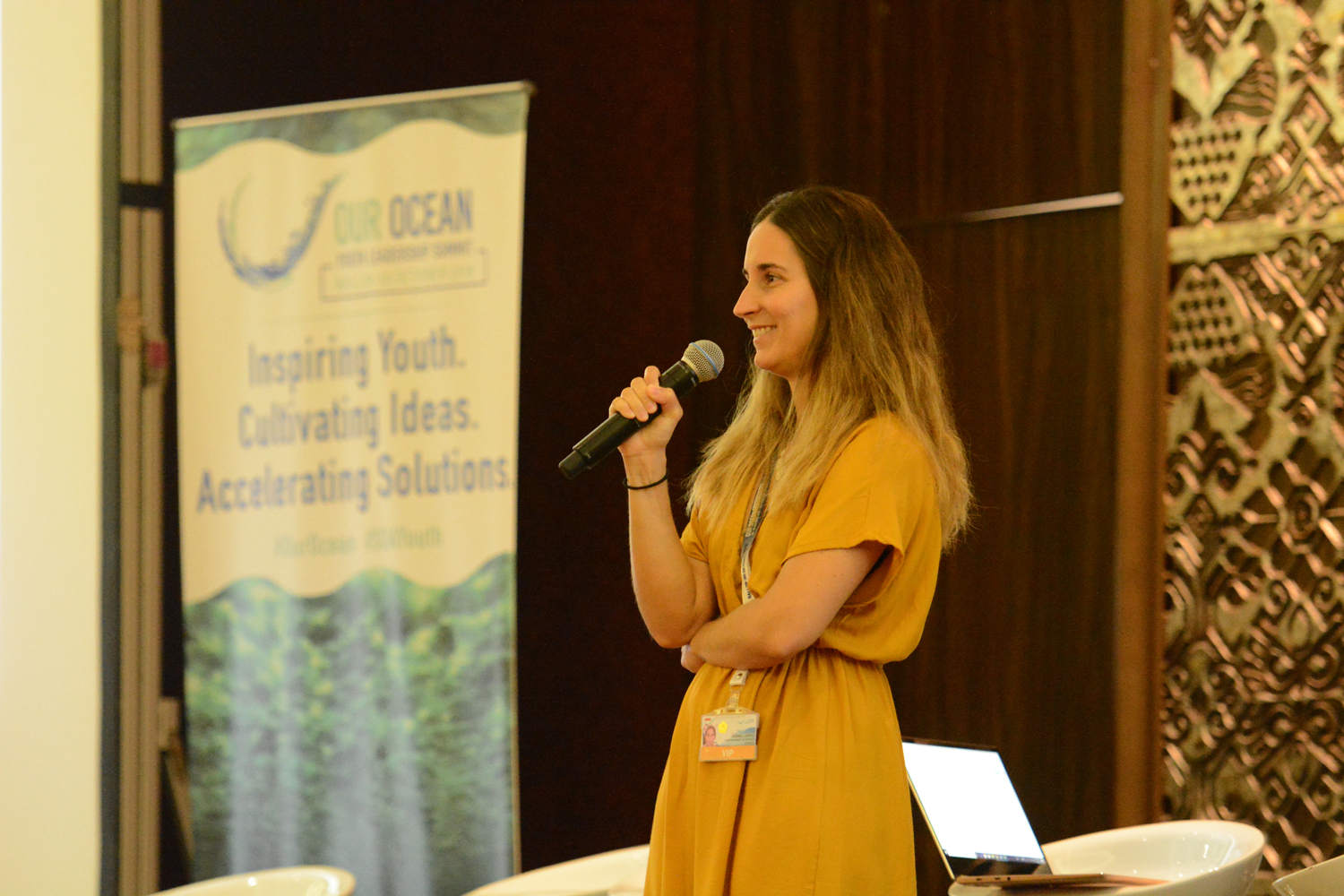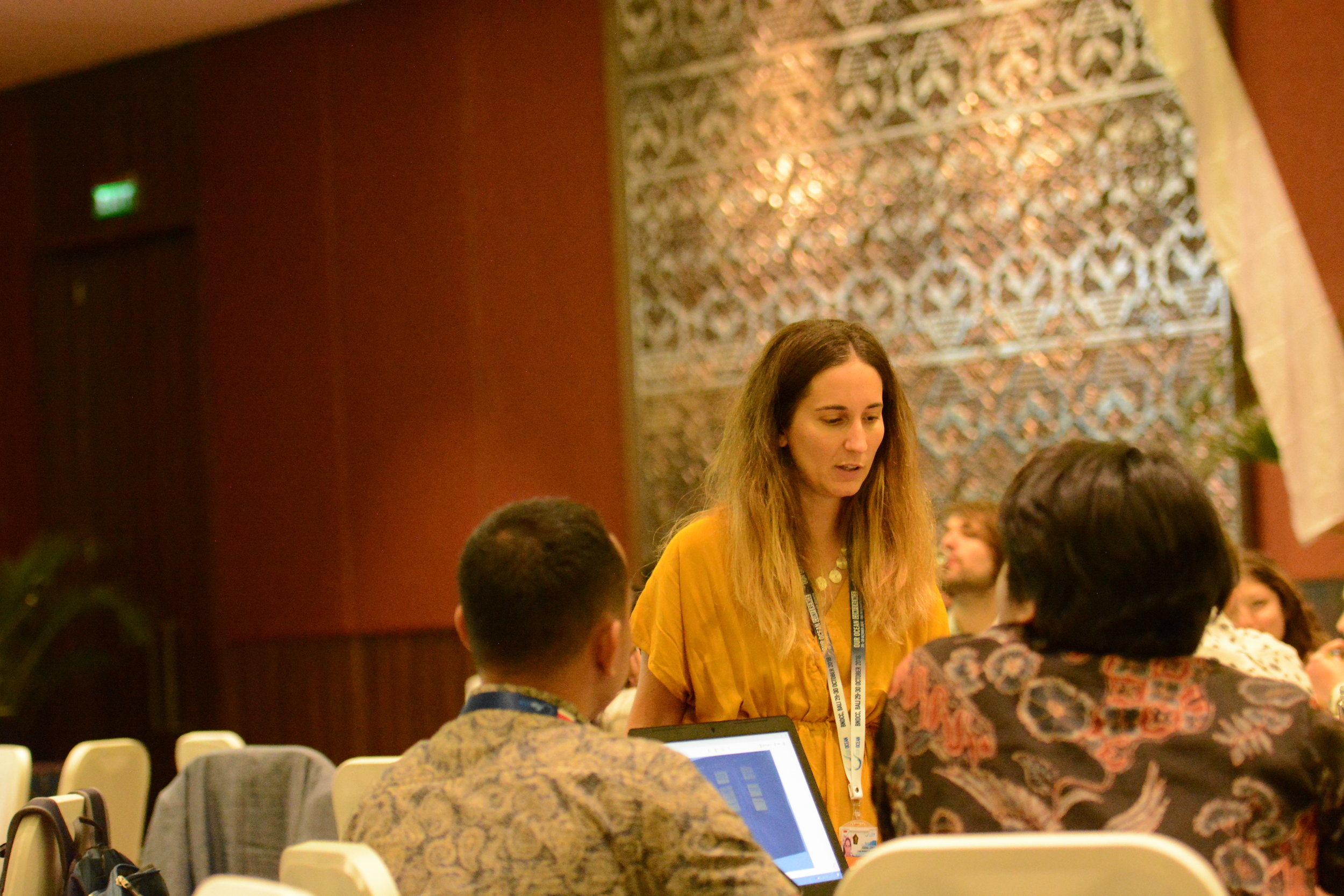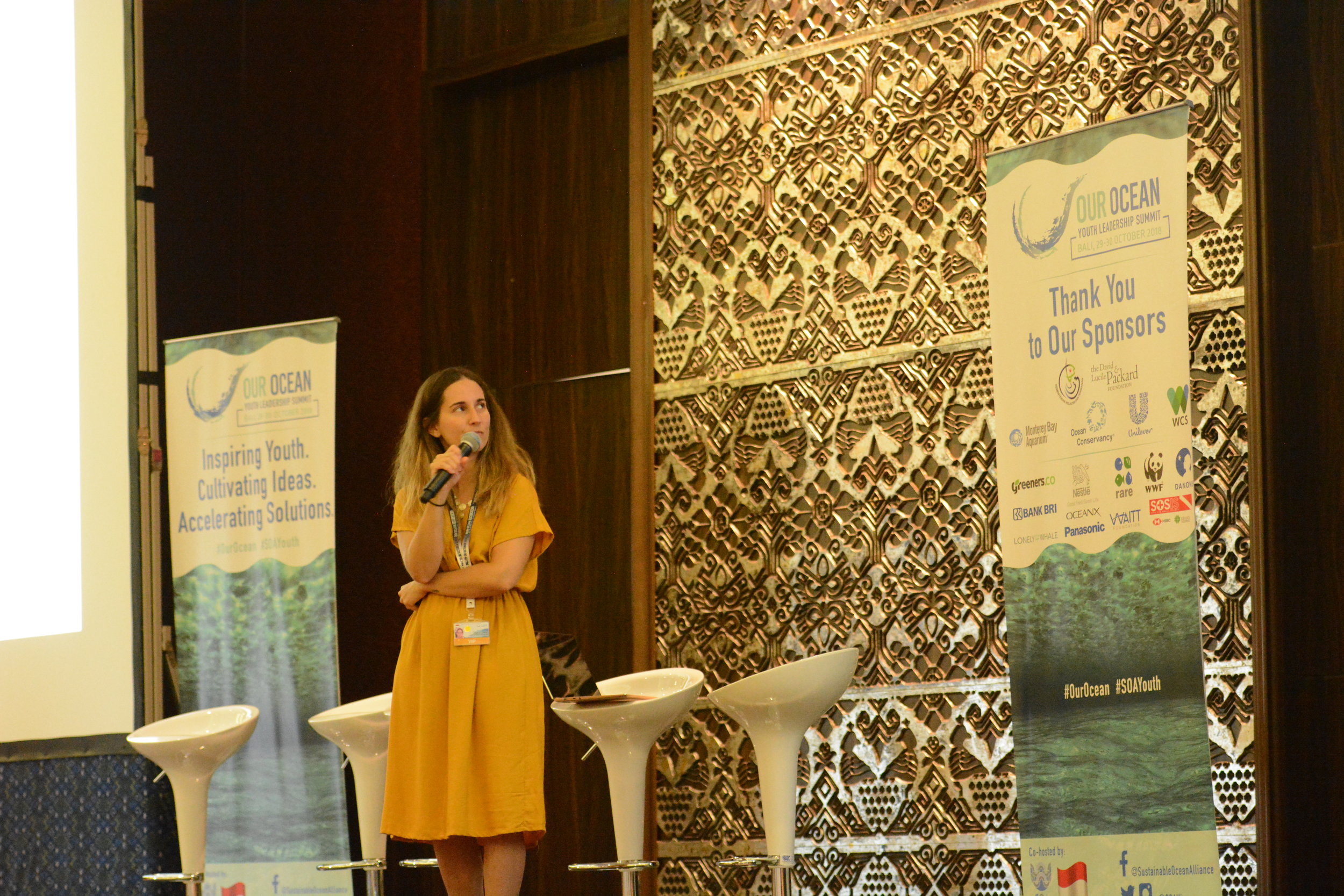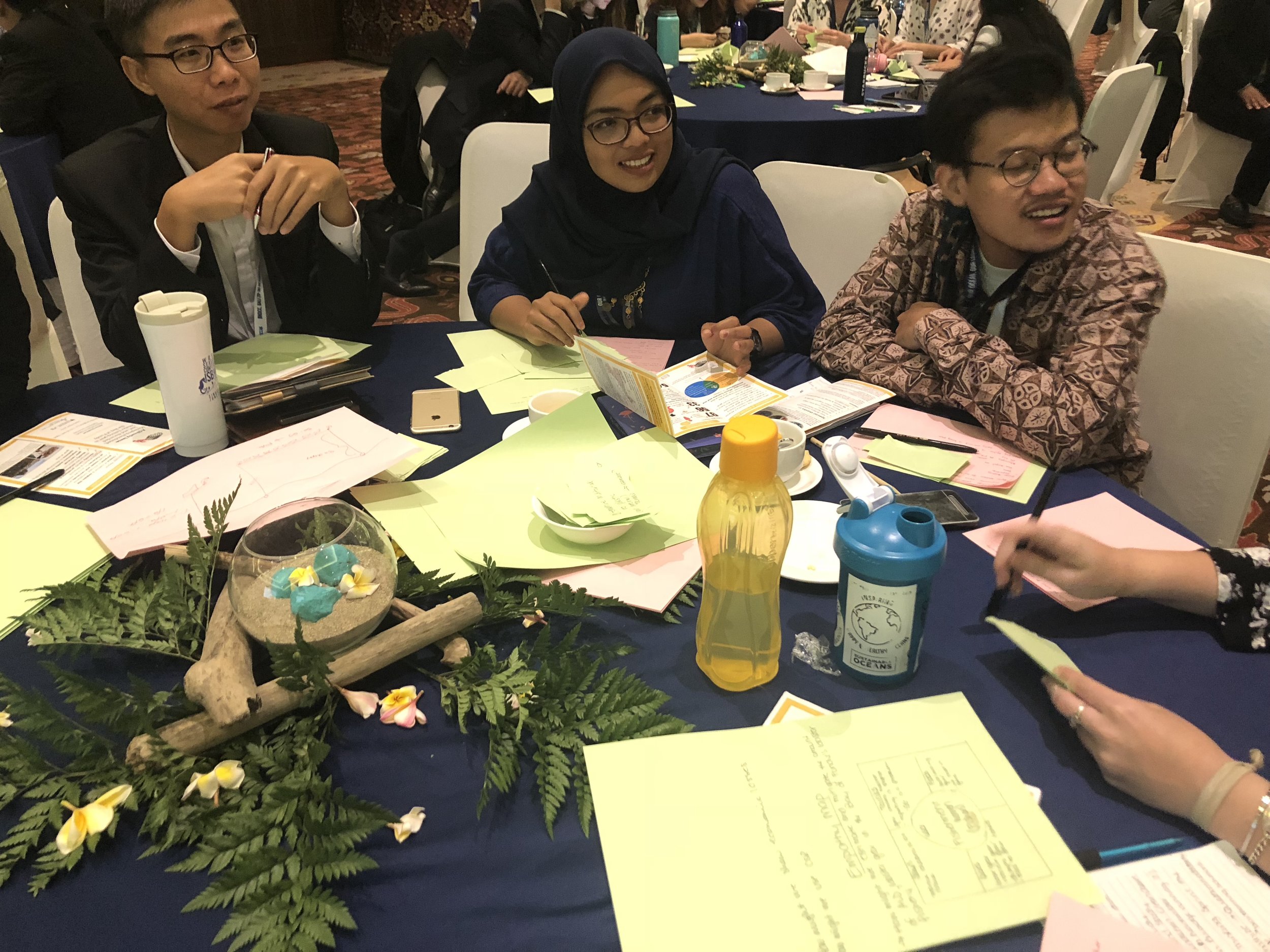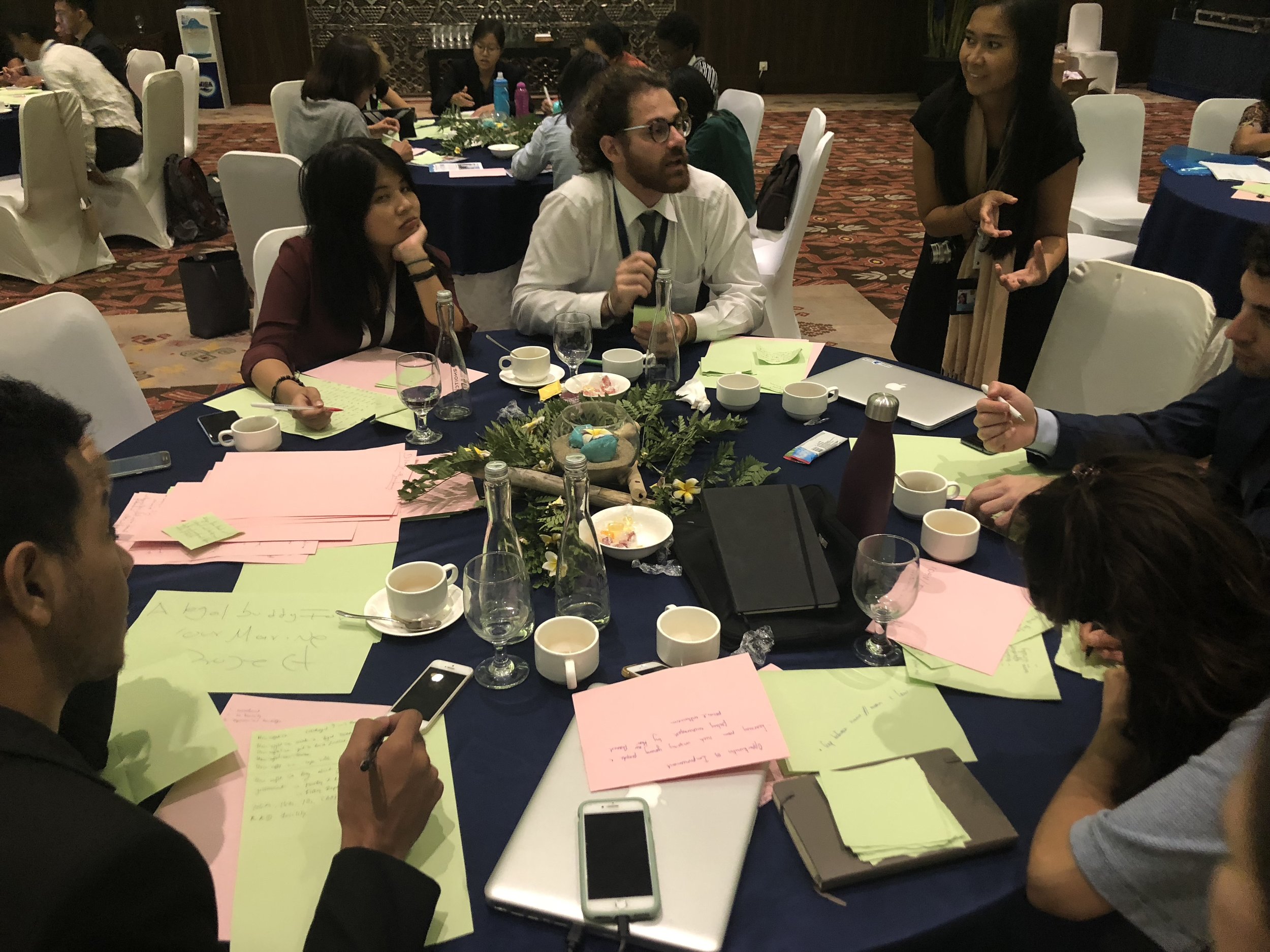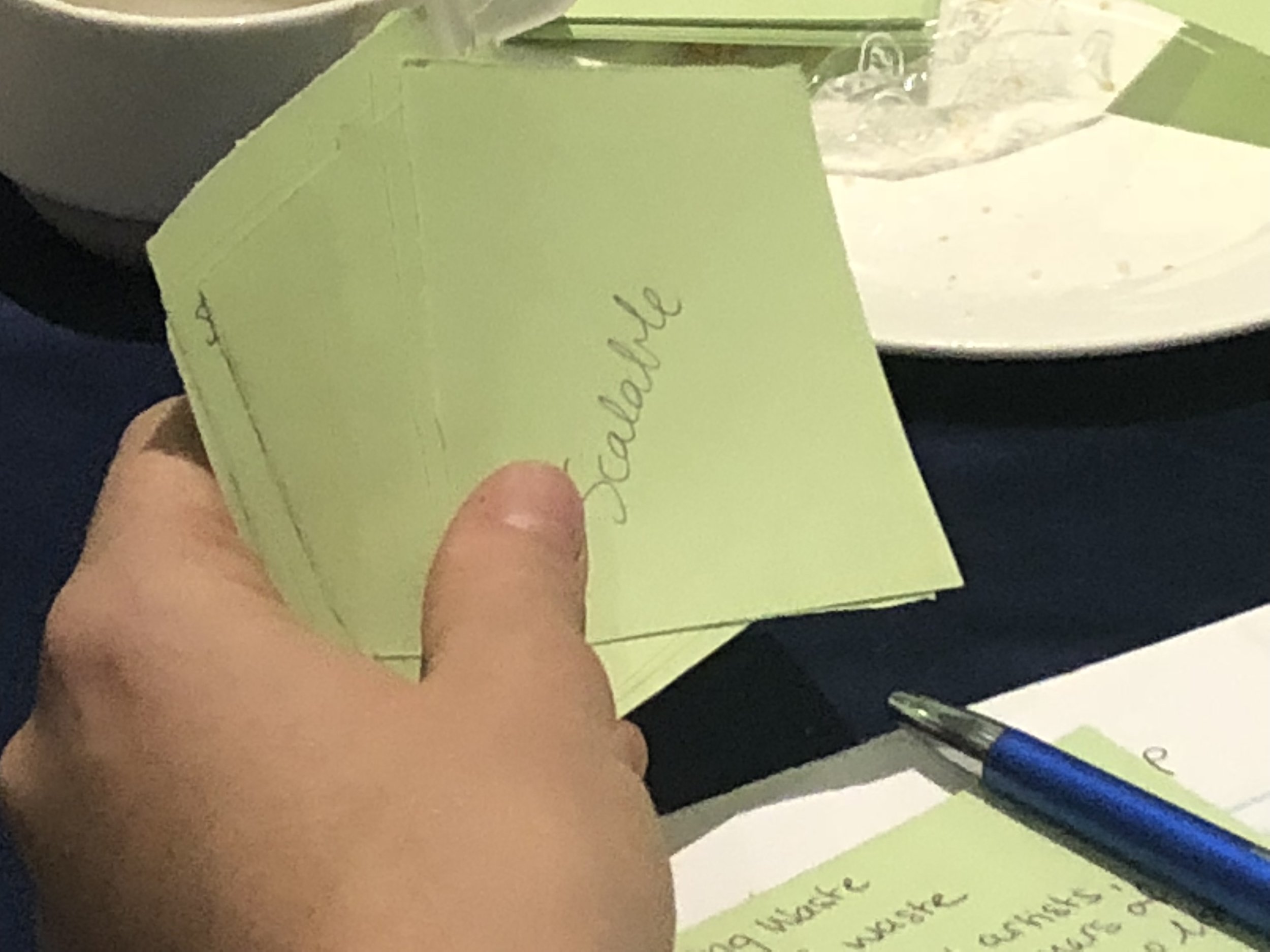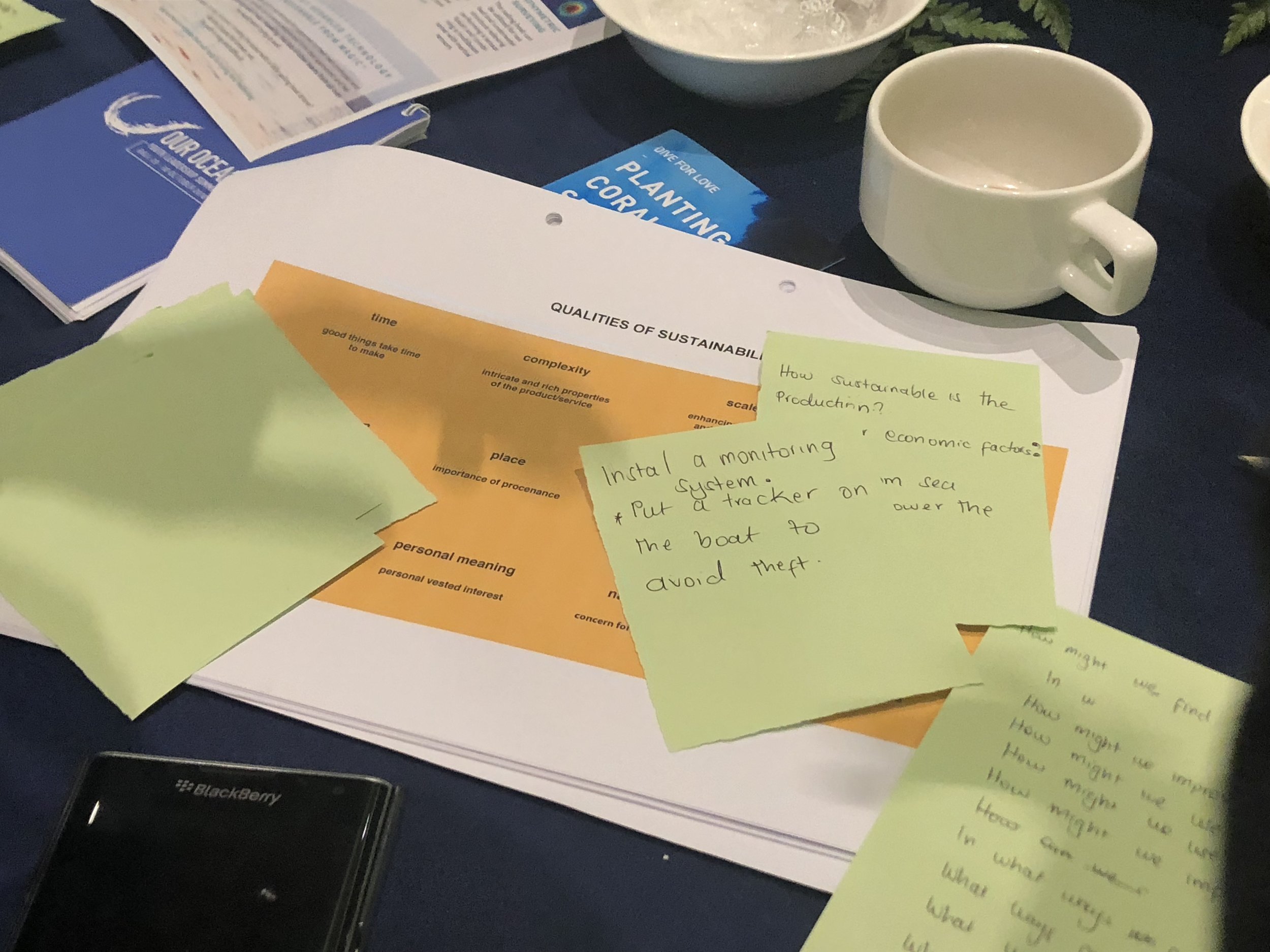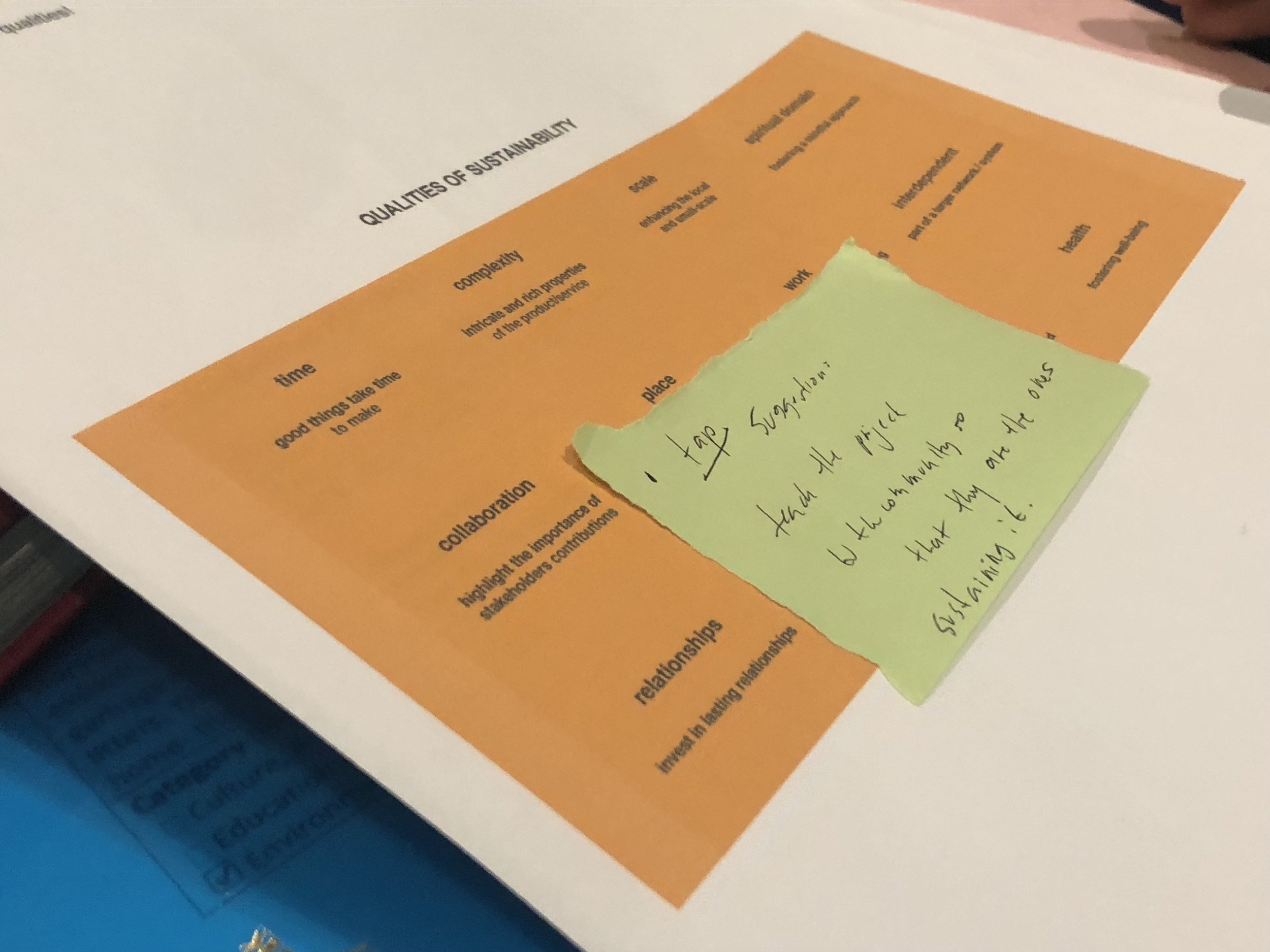Why experience design matters in sustainability?
Client: World Business Council for Sustainable Development
Context
A training session for Chief Sustainability Officers on Experience Design for Sustainability.
What we did
Experience design for sustainability refers to the intentional and strategic approach of incorporating sustainable principles into the design process of products, services, and overall user experiences. It involves considering the environmental, social, and economic impact of design decisions to create experiences that not only meet user needs but also contribute positively to the planet and society.
Impact
Experience design for sustainability aligns with the broader movement towards responsible and ethical design practices. It recognizes the interconnectedness of design decisions with environmental and social factors and seeks to create solutions that contribute positively to a more sustainable and equitable future. This approach is relevant across various industries, including product design, service design, and digital design.
Will you bridge a conversation between opposing viewpoints on distributed energy?
Client: Rockefeller Foundation
Context
The future of energy is decentralized. Rapidly falling costs and improving technology mean that distributed energy is ready to play a major role in modern energy systems. By 2030, electricity must power all people and economies sustainably. Our client leads research to unlock affordable, reliable power and make distributed energy a core component of integrated electricity systems. For the two billion people living with no or unreliable access to electricity, distributed energy provides a pathway to economic inclusion and prosperity.
What we did
We conducted a series of workshops and in-depth interviews with key leaders in Sub-Saharan African countries. The objective was to bridge the different views on the benefits of distributed energy solutions. It was important to capture the cultural nuances of local views, habits, practices, and community demands.
Impact
Support for better coordination between responsible ministries, NGOs, and power providers to work together with community leaders. For example, when a community reaches an average electricity consumption of 200 kWh per person, it opens up a new world of opportunity. This energy can electrify small businesses, unlock agricultural productivity, and increase incomes.
How to integrate ESG insights into the design process?
Client: PWC Germany Experience Consulting
Fractional research lead - duration 12 months
Context
Explored the intersection of design innovation and sustainable impact in this groundbreaking project. Unveiling the power of Environmental, Social, and Governance considerations, this initiative explored how a design team could seamlessly embed ESG principles into their methods & tools.
What we did
My collaboration with the PwC Experience Consulting team delved into the strategic integration of ESG insights, ensuring that every design decision reflected a commitment to environmental stewardship, social responsibility, and ethical governance. Participants engaged with industry leaders, design thinkers, and sustainability experts as we navigated the transformative landscape where creativity met conscious decision-making. The project aimed to redefine design excellence by embracing ESG values and shaping a future where responsible design becomes the norm.
Impact
By meticulously considering the environmental impact of materials, supply chains, and manufacturing processes, businesses reduce their ecological footprint and contribute to sustainability. Socially, integrating ESG metrics ensures that products are ethically sourced and produced, fostering fair labor practices and diversity. Additionally, a commitment to good governance principles enhances transparency and accountability throughout the product lifecycle, streamlining the design process. This not only instills a sense of responsibility in the design team but also introduces efficiencies by preemptively addressing potential ethical or environmental concerns. The collective result is not only environmentally responsible and socially conscious products but also a paradigm shift towards a more sustainable and ethical business model, resonating positively with conscious consumers and contributing to the long-term health of both businesses and the planet.
What cultural cues in sustainable mobility products?
Client: Daimler Mercedes-Benz
Context
Immersive exploration delving into the dynamic intersection of urban living, sustainability, and automotive design through extensive field studies. In our quest to understand people's perceptions of the city and sustainability within the automotive industry, we engage with communities, commuters, and urban dwellers. By leveraging ethnographic research methods, our team delves into the nuanced relationship between individuals, their mobility choices, and the impact on urban environments. Uncover firsthand insights into how the automotive landscape shapes perceptions of sustainability and influences city dynamics. This project not only aims to redefine the future of mobility but also contributes valuable knowledge to the broader discourse on sustainable urban living. Join us on this transformative journey as we unveil the authentic narratives that inform the next generation of automotive design and its role in fostering sustainable, people-centric cities.
What we did
In close collaboration with the client team globally, we established the foundation for a new approach to understanding the diverse cultural views of sustainability in their product. We held sessions with internal stakeholders and developed an approach that respects all cultural nuances.
Impact
The impact of delivering a story where all counterparts feel seen is significant within the organization. This research can align efforts to apply the outcomes to the product to be launched in different markets.
Why small merchants can be resilient?
Client: SumUp
Context
Long engagement, advising on best practices for research as the company expands globally and builds new teams. Our comprehensive approach involved evaluating cultural nuances, user behaviors, and market dynamics across diverse regions, ensuring a tailored and user-centric strategy. Through collaborative workshops and hands-on training, empowered SumUp's teams to integrate effective research methodologies seamlessly into their global expansion efforts. As SumUp envisions a future of innovation and growth, this collaboration served as a catalyst for cultivating a design-driven culture that resonates with users worldwide.
What we did
The global pandemic has profoundly impacted small merchants, reshaping the landscape of commerce and presenting unprecedented challenges. As these entrepreneurs navigate a rapidly evolving market, the role of design research emerges as a crucial catalyst for resilience and adaptation. By employing empathetic research methodologies, designers can gain deep insights into the evolving needs and pain points of small merchants. Understanding shifts in consumer behavior, preferences, and expectations becomes pivotal in crafting solutions that are not just functional but also resonate with the human experiences of both merchants and customers.
Impact
Design research served as a guiding light, enabling the creation of user-centric strategies that empowered small businesses to thrive in an ever-changing environment. From reimagining physical store experience to optimizing online platforms, the insights gleaned through design research became invaluable tools for small merchants, offering them the agility and innovation needed to not only survive but flourish in the post-pandemic landscape.
Can you unify our global research practice?
Client: Delivery Hero
Fractional research lead - duration 12 months
Context
The objective of this project was to conduct a comprehensive audit of the existing user research community within the organization and subsequently develop new principles and guidelines to unify and strengthen the community as it expands.
What we did
The project focused on auditing the existing user research community within the organization, analyzing current practices through stakeholder interviews and documentation review. The goal was to identify patterns, discrepancies, and areas for improvement. Following this, a collaborative process involving workshops with key stakeholders was employed to develop a set of principles and guidelines to unify the user research community.
Impact
The resulting comprehensive guidelines covered research methodologies, communication, collaboration, and knowledge sharing. Implementation included training sessions, onboarding programs, and ongoing monitoring to ensure widespread adoption and continuous improvement. The project aimed to create a more cohesive, collaborative, and effective user research community aligned with organizational goals.
How ocean tech benefits from design methods?
Ocean-tech start-up advisory and design for sustainability training,
Client: Our Ocean Alliance / UN Our Ocean conference
Context
SOA is a non-profit organization that focuses on engaging young leaders and innovators in the mission to promote ocean health and sustainability. The organization has been particularly active in mobilizing youth to address global ocean challenges.
What we did
The Sustainable Oceans Alliance hosts an annual Ocean Solutions Summit, bringing together young leaders, policymakers, scientists, and entrepreneurs to discuss and develop solutions for ocean sustainability challenges. This summit serves as a platform for collaboration and idea-sharing. Design for sustainability methods can play a crucial role in addressing ocean issues by focusing on solutions that mitigate environmental impact, promote conservation, and raise awareness.
Impact
Facilitating design workshops was an effective way to gather insights, ideas, and solutions from diverse perspectives. By conducting collaborative sessions, the collective creativity of the SOA team and its stakeholders was harnessed to address specific challenges or plan initiatives more effectively.
Can we design a Futures Lab?
Design research & facilitation for University of the Arts London platform UAL Futures and with over 150 students, staff, alumni and creative industry partners.
Client: University of the Arts London
Context
Scoping research and facilitation for Platform UAL Futures. worked with over 150 students, staff, alumni and creative industry partners on a research and co-design project exploring ways we can support digital creativity at UAL.
What we did
We designed a series of workshops with the aim of;
- Exploring and identifying themes in the current digital skills and learning landscape.
- Identifying the needs and behaviors of students in relation to digital skills.
- Mapping students’ creative journeys and ways they access and apply digital technology.
- Bringing students and creative professionals together to share insights, ideas and come up with solutions to the challenge of improving digital skills.
- Exploring how outcomes might be developed into income generating enterprise opportunities to enable UAL Futures to become sustainable.
- The project had input from over 150 students, staff, alumni and creative professionals. In workshops we were also joined by speakers from the creative industries and education including the Tate, Hyper Island, Hirsch and Mann, General Assembly and UAL.
Responding to student’s needs, behaviors and challenges, these are our findings, along with recommendations for ways UAL can approach the delivery of new content, services and experiences.
Impact
UAL Futures Learn Report
Collaboration with designer Miriam Ribul and Luke Whitehead, UAL Futures Project Lead.













